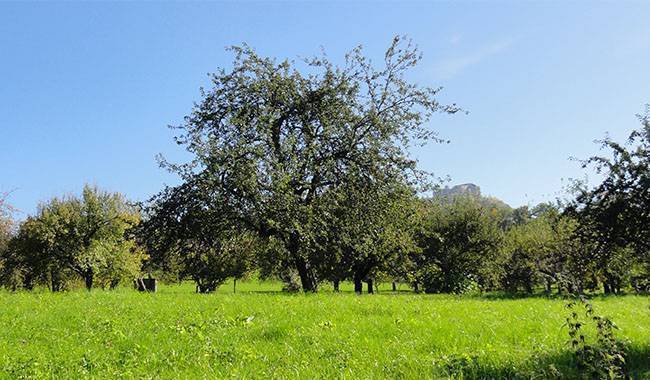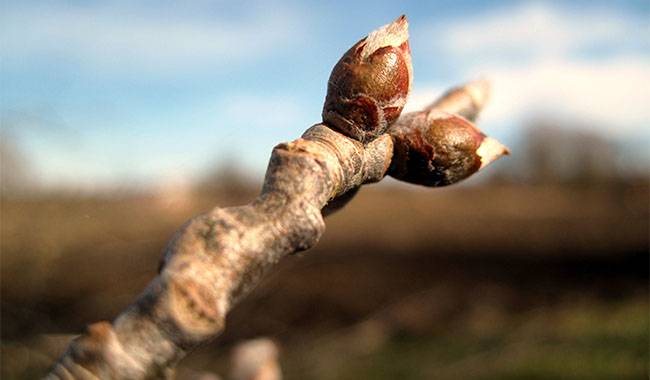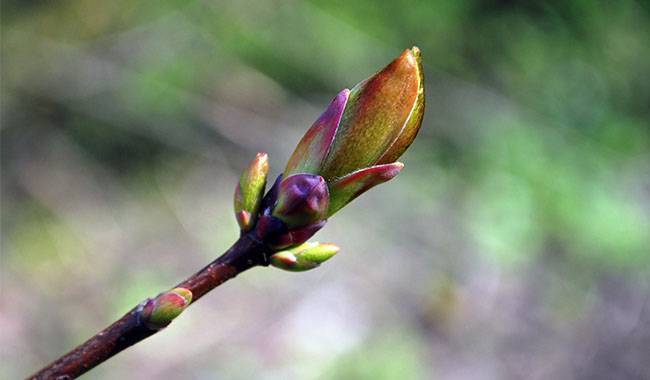
This process is sometimes carried out by gardeners in their own plots. There are many reasons for transplanting established plants to a new location: for example, soil conditions (often combined with climatic conditions). Areas, where shrubs have grown for several years, maybe flooded by meltwater or rain, or the shrubs may suddenly start to freeze every year.
Or it may be purely domestic conditions, such as a neighbor building a fence and now your bush is in the shade, or a cherry tree has grown so large that there is no longer enough room for the currant bush growing nearby.
Either way, we are faced with the task of replanting that bush in a new location. All you have to do is not take too long after replanting the transplant trees and quickly restore the fruit.
It seems all trivial and simple: the shrub should be dug up and replanted, but in fact, all is not so. Often, shrubs that have undergone this replanting die outright or become sick and take a long time to take root.
To make things go smoothly, this article provides general advice on transplanting, gives some important tips, and then breaks down the transplanting program for each group of shrubs.
GENERAL RECOMMENDATIONS FOR REPLANTING FRUIT TREES AND SHRUBS
Choose a location. You should choose it even before you start transplanting. This time, try to choose the most suitable place, not flooded by meltwater or rain, not in dense shade, with nutritious and loose soil. Make sure you choose the right location based on the characteristics of the crop. For example, blueberries like acidic and moist soil, currants like neutral and moderately moist soil, etc.
Prepare a planting hole. Of course, it is difficult to calculate how a shrub should be when its roots are still in the soil, but you can dig a larger hole, for example, 40inch (1 meter) wide and deep. Such a hole will fit the root system of most shrubs. If the root system is too tight, you can quickly widen the hole – this will still be faster than digging the hole when the shrub’s roots are out of the soil.
When digging shrubs, do not start digging directly from the trunk to the roots, but dig around the perimeter first (be careful and take care not to damage the roots). Determine the area where they occur and slowly approach the center of the bush by digging the lateral roots. Afterward, you can simply lift the bush with a spade and remove it from the soil.
When digging and replanting any bush, try to keep as much of the root system intact and leave as much soil on it as possible. There is no need to shake off the soil, let alone flush the roots with water. This can even be dangerous, especially if it is hot outside.
After digging up any shrub and planting it in a new place, it needs to be watered constantly during the season so that the soil does not dry out. In this case, you should not turn the soil into a bog; just keep it moist.
Irrigation can be combined with fertilization. It is useful to bring a tablespoon of ammonium nitrate in spring and a teaspoon of potassium sulfate and calcium superphosphate in midsummer and to mulch the soil surface of the occluded area with wood ash (200-250 g per plant) in autumn. The ash can be applied under any shrub, except blueberries, because the ash can acidify the soil.
IMPORTANT TIPS
Timing of transplanting. You should preferably choose late autumn or early spring, but if you are replanting very large shrubs, you can also do it in winter. Replanting plants in summer, even with root balls, is risky, especially if you don’t have enough water and nutrients after planting. Talking about nutrition: the fertilizer in the example (except ash) is best dissolved in water.
Try to transplant your shrubs as soon as possible. Remember: the sooner the shrub is in the ground, the better chance it will have of rooting quickly in its new location. Most of the time is usually spent on digging up the shrub, while planting is usually done in a few minutes. This should always be taken into account and time allocated correctly.

HOW TO TRANSPLANT CURRANT BUSHES, RASPBERRY, HONEYSUCKLE, CRANBERRY, CRANBERRY, BLUEBERRY, AND OTHER SIMILAR CROPS
Therefore, you need to transplant a bush of one of the above species. You should first choose the best time for transplanting. The timing has already been stated, but it may depend on your climate zone. For example, in northern regions the best time for transplanting shrubs in spring. Transplanting should not be delayed under any circumstances: as soon as the snow melts, go to the site and transplant so that the shrubs wake up in their new location with buds already opened.
This way, your chances of success in the case will increase many times. It is advisable to finish replanting by the end of March when the active sap movement in the plant has begun. If you don’t think you have time, don’t take the risk, it is better to postpone transplanting until late autumn, i.e. mid-November.
As we have already pointed out, transplanting shrubs can also be done in summer. This is risky, but it is possible to take this risk if you can keep the maximum root system intact, without destroying the soil mass, and can provide the shrub with water and nutrients in the future.
The easiest to dig up will be Honeysuckle, Blueberry, and Currant, the more difficult – Raspberry (because it has thorns), but the hardest to dig up will be Iris and Cranberry. If the cranberry bushes are more than 5 years old and the yarrow bushes are more than 7 years old, then you will have a very hard time because the roots of these plants are quite strong and can penetrate to great depths. Here you can dig the hole at a width of 40inch (1 meter), but in-depth it is better to do 60inch (1.5 meters).
All of these plants like open and well-lit areas and moderate soil moisture. Blueberries prefer a more moist and acidic soil, which should be kept in mind. Geldard roses tolerate acidity in the soil but prefer a place with lots of moisture.
Prepare the soil for planting ahead of time by digging a spade full of bayonets and removing weeds. It is best to fertilize the soil so that 4-5 kg of well-decomposed manure and 250-300 g of wood ash (but not under blueberries) you can add and a tablespoon of nitroaminophos card per square meter. Under the blueberry, the soil should be mixed with an equal amount of acid peat, or even better, dig a hole, lay polyethylene film in it, fill it with acid peat and already plant blueberry trees in it.
When replanting several bushes of these plants, try to make the distance between them equal to 80inch (2 meters), if the bushes are strongly spanned, then it is 120inch (3 meters) – in the case of iris and 140inch (3.5 meters) – is the standard.
Before digging, prepare a planting hole: at its bottom, pour clay or broken bricks in a layer of about 1 inch, and on top, put a few shovels of the nutrient mixture, which can be prepared by mixing 5-6 kg of fertile soil, 2-3 kg of humus, 15-20 g of potassium sulfate and 90-100 g of calcium superphosphate. Next, watering the hole well, you can plant shrubs in it. By the way, when preparing a mixed pit for planting red currants, you can add a few kilograms of river sand.
The hole is ready and you can now proceed to transfer the bushes to the new place. Speaking of shifting: if the desired place is far from the last one, it is advisable to stock a tarp so that you can easily move the bush instead of dragging it with shoots and risking breaking them (especially the red currants).
Before digging, check the ground part: remove all the old shoots that no longer produce fruit, dry old shoots if any, and shorten the young ones by half, by cutting to the ring.
Next, as we have already suggested, make trenches around the bush. Currants and Raspberries can be 12inch (30 cm) back from the base, honeysuckle and chokeberries have 8inch (20 cm), Waterbury and cranberries can be a little more 14-16inch (35-40 cm).
To give back the distance, you need to carefully and gradually deepen the bayonet shovel bayonet and half-two, then destroy the plant in all directions, slowly, moving toward the center, trying to get it out of the soil. If you get some particularly strong and long lateral roots along the way, you can cut them down.
Remember that all of the crops described have very fragile shoots that can easily separate from the roots, so when digging the plant out of the soil, do not pull on the shoots, just try to pick up the roots with a spade and pull them out.
Once the shrub has been removed from the soil, you must act immediately or the roots may dry out. Three or four buckets of water should be poured in to moisten the soil in the planting hole and place the roots on this nutrient slurry. When planting, it is highly recommended to place the shrubs on the sides with the light, because they used to grow this way. To understand this is simple: the shoots on the south side are usually dark, as if they were tanned, while those on the north side – lighter (paler).
The shrub should be placed in the hole so that it is centered, so that the roots are evenly distributed in the hole, not straying or breaking, and the neck of the roots is submerged in the soil for about 1 inch. After planting, the soil will be left compacted, watered with a few buckets of water, and covered with a layer of humus of about 1 inch.
HOW TO TRANSPLANT GRAPES, EUSTOMA, LEMONGRASS, AND OTHER VINES
Grapes and vines are best transplanted in the fall. The signal to start transplanting is usually the complete fall of the leaves. This means that the plant has entered the dormant stage. The main thing here is to allow the plants to move to a new location at least a week before frost arrives and to prevent damage to the roots. If winter is very early and you don’t have time to transplant the grapes and vines, it is perfectly acceptable to wait until spring. The main thing here is to have time to finish transplanting ten days before the buds start to bloom.
Transplanting grapes and vines as well as current bushes usually begins with the preparation of a planting hole, similar to the one for currants and similar crops. Once the planting hole is prepared, you can proceed to prepare the plants for digging. To do this with vines and grapes, three days before transplanting, stop watering, then the grapes will need to leave a few sleeves with young vines, aged one or two years. In this case, the uppermost shoots should be cut into two to three eyes, and all cuts should be covered with garden varnish. Only in this way can you dig out the vine bush, back 18-22inch (45-55 cm) from the center, and remove it from the soil in the same way as you would dig a currant bush.
As for the vines, you can leave two or three of the youngest shoots in the best possible position, the rest are easily accepted and can be removed. Digging, away from the center, in the case of vines, it is possible to reach 14-16inch (35-40 cm), and all the rest of the movements are exactly the same.
In the future, after planting the vines and vines, after compacting the soil, watering, and mulching, it will be necessary to remove all the flowers at the first flowering to allow the plant to develop fully in its new place. In the second season, remove some inflorescences: about half for grapes and a third for vines. During this period, do not forget to provide the plants with sufficient water and nutrients.
HOW TO TRANSPLANT RASPBERRIES, BLACKBERRIES, BLACKBERRIES, AND SIMILAR PLANTS

Raspberry, blackberry, and blackberry bushes are best tolerated if transplanted in autumn. Autumn transplanting is particularly suitable for southern regions and central Russia, and in colder regions, it is best to transplant these plants in spring.
Both raspberries and blackberries are light-loving plants, so the new place where they are placed should always be open and well lit. Good starting points for raspberries, blackberries, and blackberries are tomatoes, cucumbers, and cabbage. It is not recommended to plant crops in the same place where the same family of crops grows: they may have common diseases that accumulate over the years of cultivation.
The soil under raspberries and blackberries should be well prepared. You should dig a spade full of bayonets, add a bucket of humus or well-digested manure, a tablespoon of nitrocellulose, and 300 grams of wood ash per square meter. The blackthorn also needs to be thoroughly eradicated from weeds, especially couch grass.
Planting holes under raspberries should be 21-23inch (55-60 cm) wide and 18-20inch (45-50 cm) deep in diameter; planting holes under blackberries are 16-20inch (40-50 cm) wide and 12-16inch (30-40 cm) deep in diameter.
The diameter of the planting hole under the blackberry is 14-16inch (35-40 cm) wide and 18-20inch (45-50 cm) deep. When transplanting several raspberries, the distance between the holes should be 18-21inch (45-55 cm) for blackberries, 20-24inch (50-60 cm) for blackberries, and 21-25inch (55-65 cm) for blackberries.
If you have a choice, use the most vigorous, well-developed plants with stems at least 0.4inch (1cm) in diameter when transplanting. Shoots are best pruned to about 40inch (1 meter) above the soil surface, while in Jazmaring they can be cut to 20inch (50 cm).
When digging up the plants, you must set back 14-16inch (35-40 cm) from the base of the raspberry, 12-14inch (30-35 cm) for blackberry, and 16-20inch (40-50 cm) for blackberry. Next, follow the same plan for digging, but with one nuance: if the roots will be exposed during digging, they must be soaked in clay putty before planting.
Try not to deepen the plant when planting, especially blackberries, which can form a lot of root shoots if the root neck is strongly buried, so it is better to place the seedlings so that the root neck is exactly at the soil level. After planting, it is necessary to water the soil with 2-3 buckets of water and then cover it with humus, in a layer of about 1 inch.
Here are simple techniques for transplanting shrubs in a new location, using which you can obtain good results, rejuvenate the plant in its new location, gain strength, and, over time, actively bear fruit.
Finally, just a few words about strawberries. I often hear the question – is it possible to transplant a strawberry garden during the flowering period. The answer is that it is allowed, but it is better to tear off all the flowers so that after transplanting the plant has the power to restore the lost art of the root system, without spending power to form a harvest.
If you have any questions, we will be glad to answer them in the comments.







